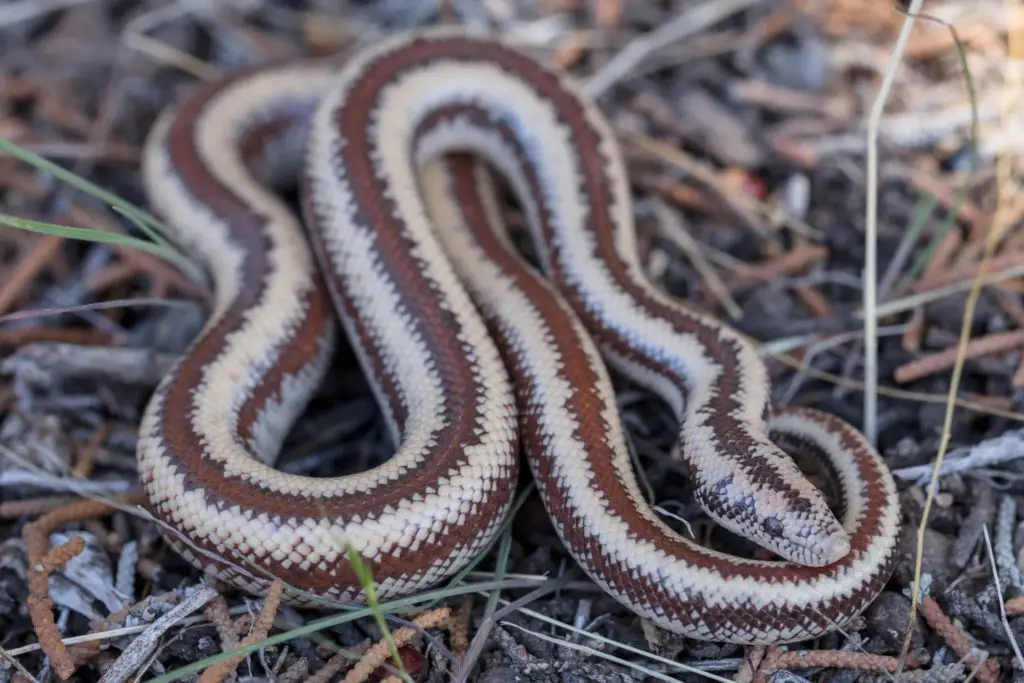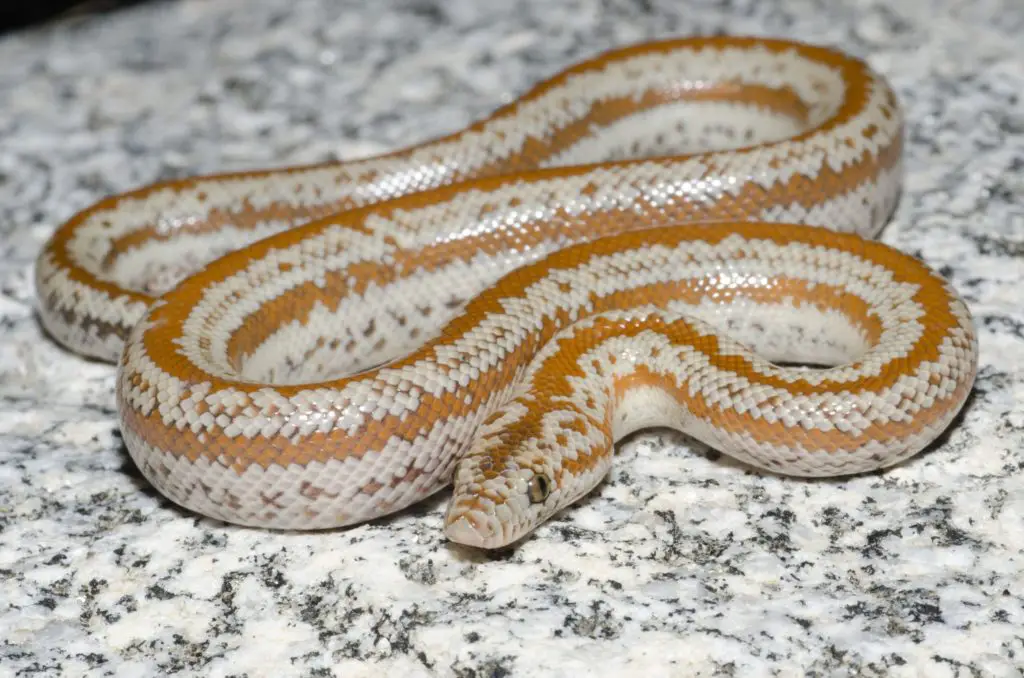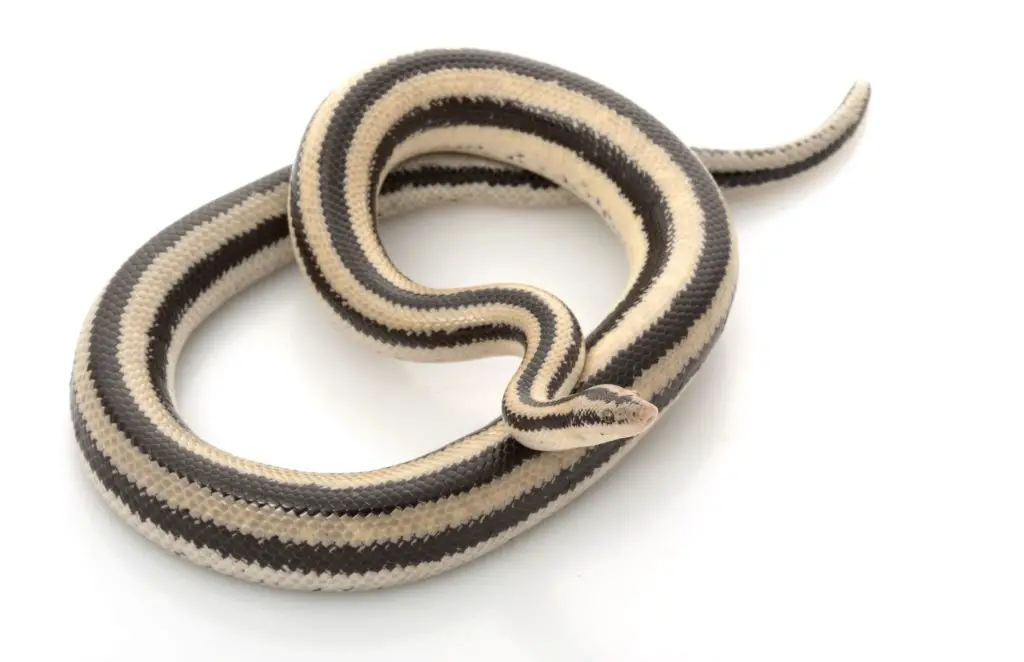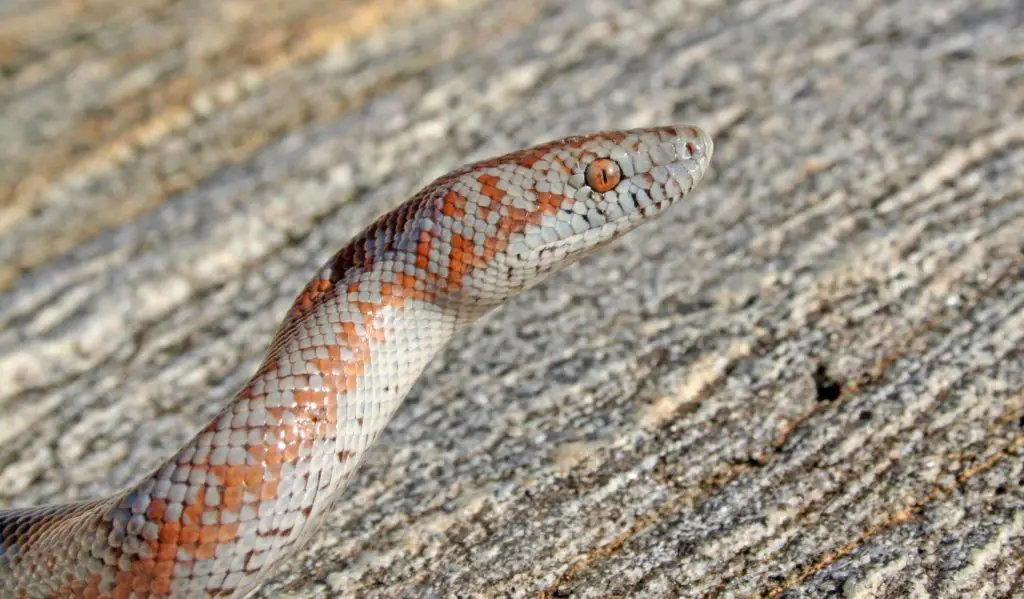The Rosy Boa diet is actually quite varied in the wild. In captivity, however, they can be reared on a very simple rodent diet if you get a couple of things right…
Last updated on February 1st, 2023 at 09:31 am
Like almost all snakes, Rosy Boas eat whole prey and tend to be opportunistic. In the wild this leads to them consuming a variety of prey, though they undoubtedly have a preference for rodents. In captivity, this means they can eat mice alone, but you have to source those mice correctly.
What do Rosy Boas eat?
Being obligate carnivores, both Rosy Boa species (Lichanura trivirgata and Lichanura orcutti) kill live prey in the wild.
As do other boidae species (Boas), they grab anything small enough and constrict it until it stops breathing. It’s this habit that got their famous relatives in the Boa Constrictor complex their name, after all.
So far, there are reliable records of them eating the following prey items:
- Lizards
- Nestling birds
- Mice and other rodents
- Other snakes
- Bats
In captivity they do fine on a diet of mice alone. The reason for this is simple: mice are a complete food source, with a decent calcium to phosphorus ratio, plenty of protein and lots of fat.
So long as the mice had a healthy diet, they provide everything a nocturnal snake like the Rosy Boa needs.
For keepers, this diet is convenient because mice are cheap, and are available frozen in bulk. This means you can feed a Rosy Boa for $1.50 a week or less.
Note: You can take a look at feeding frequency and prey size in the feeding chart towards the end of this article.

How do Rosy Boas target their prey?
A common misconception is that these snakes have thermoreceptive (heating sensing) labial pits. This is understandable, as many of their more famous relatives like the Emerald Tree Boa do.
Notwithstanding, Rosy Boas do not have heating sensing pits. In the wild, they regularly forage for prey, poking their heads into crevices between rocks and into rodent burrows. They also occasionally burrow into substrate, using their slightly pointed heads to plough in.
For snakes like this, heat sensing pits would be a health-hazard. Dirt would block them and eventually lead to infections or shedding issues. This is why neither the Sand Boas ( Erycinae) nor the Rubber Boa (Charina bottae) have them either.
So, given that they can’t sense heat, Rosy Boas rely on their eyesight and sense of smell to detect and target prey. Their eyesight isnot too bad for a snake, and great at detecting movement.
Their sense of smell, on the other hand, is highly acute. This is thanks to their vomeronasal organ, also known as the Jacobson’s Organ.
Situated in the roof of their mouth, this organ analyses chemical particles passed onto it by the snake’s flicking tongue, and gives precise information on the nature of those chemicals.
If a rodent is nearby, the snake can use its sense of smell to track it down. In captivity, you can test this by leaving a mouse to thaw out next to your snake’s enclosure throughout the day. By nightfall, it should be out foraging and looking for it.

Can Rosy Boas eat frozen mice?
Not only can Rosy Boas eat frozen mice, but I only ever recommend feeding frozen-thawed. They are easy to store and buy. Moreover, having been frozen for a period of time neutralises any internal parasites present.
They are also easy to prepare. I leave them out for a few hours to thaw out gently, then place them in warm water inside a sandwich bag for 10 minutes or so.
After this time, they should be nicely warmed up, but it’s a good idea to give them a squeeze just to make sure.
The argument against feeding live mice
Whilst it is true that some keepers still feed their snakes live mice, this website does not recommend it. There are two reasons for this:
1. It is cruel to the mice.
2. Your snake could be injured.
For the first point, not everyone will agree with me. Years back there was a study that stated that mice die very quickly when constricted, almost within seconds.
Some hobbyists seized on this, stating that in this case it can’t be cruel to feed live rodents to snakes.
That is not the position of this website. The reality is that being killed by an animal much larger than yourself isn’t nice no matter how fast it is.
When you buy frozen mice, they have been humanely euthanised, and this is much kinder than being chomped on!
For the second point, it is quite obvious that feeding live mice leads to the possibility of your snake getting bitten. Often, this has almost zero effect on the snake, and even a little cut will vanish with the next shed.
Sometimes, though, a bite from a mouse forms a localised infection that causes and abscess. This generally requires a visit to the vet to resolve – putting the snake through a lot of stress, and costing you money.

Where to get your mice
Buy your mice from small and medium-sized producers who cater directly to reptile keepers. You can contact these breeders and ask them about the diet and conditions the mice are provided with, and this is the only way to be sure that you are feeding your snakes a good diet.
Do not buy mice from large pet store chains, or affiliate links from websites. You’d be buying produce that has changed hands several times, and you cannot directly contact the original producer.
The bottom line is: you have to do the homework yourself, so cut out the middleman! Fortunately, it is easy to find producers online, so start with looking for the most local producers to you. This is the best way to get fresh produce, and reduce the carbon footprint involved with shipping it.

Do Rosy Boas need vitamin supplements?
Rosy Boas do not need vitamin supplements if you follow my advice and source healthy, well-raised rodents for them. This is because these snakes are nocturnal, and have gained the ability to extract vitamin D3 from their prey and use it metabolise calcium.
A healthy rodent contains every vitamin and mineral that a Rosy Boa needs, and in the correct proportions. There is no need for additional supplementation, and it is highly possible that it could in fact poison your snake through hypervitaminosis (overdose).
Conversely, diurnal basking snakes, like the Opheodrys species (Green Snakes), do require vitamin supplements and UVB/UVA lighting. It is always a case-by-case answer.
Rosy Boa Feeding chart
This table was originally posted in the feeding section of my previous article: Are Rosy Boas good pets?
| Age | Food | Frequency |
| Neonate (baby) | pinkie mice/fuzzy mice | every 5 days |
| Subadult | hopper mice/small mice | every 7 days |
| Adult | small, large, or extra large mice | every 10-14 |

In conclusion
In the wild, Rosy Boas eat a wide variety of prey, but are generally observed to show a slight preference for rodents. In some studies, like this one, they have even shown a preference for mice with litters of tasty young, apparently being able to pick up their scent trail.
In captivity, you don’t have to provide them with a variety of prey, live prey, or mice with litters of babies!
All you have to do is provide them with frozen-thawed mice on a regular basis. Find a reputable supplier, who feeds the mice well, and they will pass on more than enough nutrition for your snake.
If you’d like to learn more about these snakes as pets, head over to our guide to keeping Rosy Boas.
